Greetings! Spring is upon us and Easter as well... Even though many consider Easter a christian holiday, societies across the globe and through history have celebrated this period after the Equinox with similar themes that transcend language and time. Please follow the links for more information, space is limited due to copywrite laws, and there are interesting facts connecting this holiday to a very real human experience of growth and evolution.
Easter is one of the primary days of the Christian calendar, commemorating the resurrection of Jesus after his crucifixion. In the West, Easter is celebrated on the Sunday following the full moon next after the vernal equinox (between March 22 and April 25).
This Holy Day is actually far older than Christianity. The name “Easter” is derived from the Old German name “Ostara,” and, in Anglo-Saxon, Eastre, or Eostre, the goddess of spring, fertility, and the rising sun. This name is a variation on the name of Ishtar, the Babylonian and Assyrian goddess of love and fertility.
Throughout Europe were celebrated rituals and sacrifices in recognition of the movement in nature from death (winter) to life (spring). These traditions were gradually absorbed by the evangelizing Christian movements. But the movement of the Sun, in its triumphant march toward the heavens, has been celebrated by people the world over. The spiritual value of Easter is reflected in the traditions and mythologies of many cultures and religions, all of which symbolize the esoteric or root meaning: the triumph of the Christ over the ego of the penitent seeker.
To understand this celebration, and the modern Holy Day of Easter, we must first understand something about the Christ.
Christ
The term Christ is derived from the Greek krestos, which esoterically means fire. Christ is an energy. This energy can incarnate within the human being. Those who earn this sacred gift can then be called "Christ." The Christ is represented in many religions.
Christ is Ormus, Ahura-Mazda among the Persians, who is the antithesis of Ahriman (Satan).
Christ is Vishnu in the sacred land of the Vedas. He is the Second Logos, sublime emanation of Brahma, the First Logos.
The Avatar Krishna is the Hindustani Jesus. The gospel of this Master is similar to the gospel of the divine Rabbi of Galilee.
Fu-Ji is the Cosmic Christ among the ancient Chinese, the one who wrote the famous I-Ching, the book of laws, and who designated Dragon Ministers for the good of humanity
Osiris was in fact the Christ in the sunny country of Khem, in the land of the Pharaohs, and whosoever incarnated Him was an Osirified One.
Quetzalcoatl is the Mexican Christ, who is now dwelling in distant Tule. - Samael Aun Weor, The Three Mountains
The Christ is widely represented by the Sun, the giver of light and life. In Kabbalah, we speak of the Christ as theSolar Logos: the Sun that illuminates the Tree of Life.
In the West, Jesus of Nazareth, who was actually named Jeshua ben Pandira, incarnated the Christ. He became the Son of the Sun, the Light of the World. He taught the path to do as he had done. He synthesized the path in this way:
Then said Jesus unto his disciples, If any man will come after me (the Cosmic Christ), let him deny himself, and take up his cross, and follow me. - Matthew 16:24
These three steps are the three factorsfor the revolution of the consciousness.
To Deny Oneself is to go against the selfish, egotistical desires that fill the mind. These desires must die in order for the Christ to enter into us. So long as we remain imperfect, we remain separate from Him.
Be ye therefore perfect, even as your Father which is in heaven is perfect. - Matthew 5:48
This is a teaching given in all great religions, which emphasizes the need for psychological work on oneself in order to achieve purity of mind and heart.
To Take Up the Cross is to enter into the work of the sacred cross, which is the work of Holy Alchemy. The fantastically ancient and ubiquitous symbol of the cross represents the core teaching of real mysticism. The cross is formed when man and woman unite in the sacred sexual act, in accordance with the instructions given by Jehovah Elohim in the Garden of Eden.
To Follow Him is to sacrifice oneself on behalf of suffering humanity, to do as the Christified Ones always do: serve humanity with love, compassion, and great strength of will, and always in accordance with divine law.
To achieve this sublime honor of receiving the Christ inside, the human being must be properly prepared. This preparation is symbolized in the cosmic drama of initiation, that series of events which are displayed in the life of Jesus of Nazareth, as well as in the life of Quetzalcoatl, Krishna, Odin, and many others. In each of these stories, the cross plays a central role.
The Vernal Equinox
Equinox: either of two times of the year when the sun crosses the plane of the earth's equator and day and night are of equal length
Equinox is a Latin word rooted in aequus, which means equal, and nox, night. Vernis is the Latin word for spring. The vernal equinox occurs around March 21st or 22nd when the length of daylight and night is exactly twelve hours each; that day is then the equinox of spring.
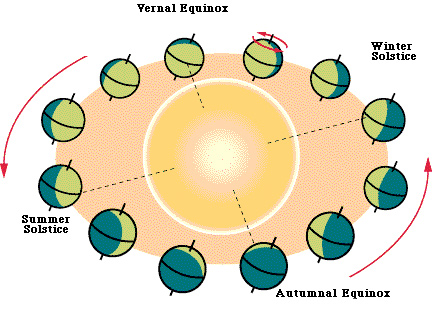
In the Vedic traditions, the “Chaitra Vishu day,” or the opening day of the first fortnight of the waxing moon, was the occasion chosen by Brahma (the Father, the First Logos) to create this world. This marks the beginning of the Vedic New Year. (That is why this day is also known as yugadhi or the beginning of a yuga).
The Babylonians began their new year on this day.
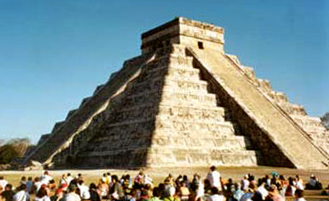 On the vernal equinox, at the El Castillo Pyramid, Chichen Itza, Yucatan, Mexico, the shadow of a sacred serpent appears to slither down the stairs.
On the vernal equinox, at the El Castillo Pyramid, Chichen Itza, Yucatan, Mexico, the shadow of a sacred serpent appears to slither down the stairs.
It is also on this day that Sri Ramachandra, the Solar Hero of theRamayana, had his triumphal entry into Ayodhya after the destruction of the demonic forces, and was crowned there on this day. This is symbolic of the triumph of the initiate over his own ego, and in the Christian tradition this supreme triumph is represented in the psychological death of the initiate upon the holy cross.
Gnostics understand that the equinox or Holy Easter is related to the beginning of the Initiation by means of the cross or sexual magic, the true beginning of the development of Christ within our dense matter or physical body.
Psychologically speaking, the Solar Logos (through the vernal equinox) heralds the entrance of the light of Christ into the soul of any human being who understands the myth represented in the gospels and who, by means of sexual magic, returns within him as a Solar Hero.
The Crucifixion
Crucifixion can be understood as derived from the Latin cruce (cross) and the ancient Greek figure of Ixion, who was tied to a flaming wheel as a punishment for his sins.

The cross is amongst the oldest and most universal of religious symbols. It is always a symbol of sacrifice and repentance. Yet, the esoteric meaning of the cross has always remained hidden from the uninitiated.
The cross has four points. The cross of the initiation is phallic; the intersection of the vertical phallus in the feminine cteis forms the cross. It is the cross of initiation that we must carry upon our shoulders.
We must comprehend that the cross with its four points symbolizes the four cardinal points of the earth: north, south, east, and west; the four ages: gold, silver, copper and iron; the four seasons of the year; the four phases of the moon; the four ways of science, philosophy, art and religion.
When we speak about the four ways, we must comprehend that the four ways are really one way. This way is the narrow and straight way of the razor’s edge, the path of the revolution of the consciousness.
The cross is a very ancient symbol that is continually utilized in all the religions of the world. One who considers it an exclusive emblem of a religious sect commits an error. When the Conquistadors of Spain arrived in the holy land of the Aztecs of Mexico, they found crosses upon all the altars.
The sign of the cross, as in the sublime monogram of our Lord the Christ, the cross of Saint Andrew and the miraculous keys of Saint Peter are all marvelous replicas of equal alchemical and kabbalistic value. It is therefore the sign capable of securing the victory for the laborers of the Great Work.
The sexual cross, the living symbol of the crossing of the lingam-yoni, has the unmistakable and marvelous print of the three nails that were used to immolate the Christ-matter. These nails are the image of the three purifications of iron and fire. Our Lord could not achieve the Resurrection without them.
The crucible is a vessel used to melt materials down in order to purify them.
In alchemy, these vessels are always made by combining
masculine (Sun) and feminine (Moon). But this work cannot function
without the presence of God (the Holy Spirit).The cross is the ancient alchemical hieroglyph of the crucible (creuset), which in the past, in French, was called “cruzel,” or “croiset.” In Latin it was called “crucibulum,” or “crisol,” which had as its root “crux,” “crucis,” or “cross.” It is evident that all of this invites us to reflect.
It is in the crucible that the raw matter of the Great Work suffers the passion of the Lord with infinite patience. In the erotic crucible of Sexual Alchemy, the ego dies and the Phoenix bird is reborn within its own ashes: INRI, “In Necis Renascor Integer,” which means, “In death I am reborn intact and pure.”
The intersection of the vertical phallus within the horizontal uterus makes a cross. This is something that can be easily verified.
If we reflect very seriously on that intimate relationship that exists between the “S” and the Tao Cross, or “T,” we arrive at the logical conclusion that only through the crossing of the lingam-yoni, (phallus and uterus), with radical exclusion of the physiological orgasm, one can awaken the Kundalini, which is the igneous serpent of our magical powers.
In the Nahuatl and Mayan conception of the cross, the Nahuatl “Nahui-ollin,” sacred symbol of the cosmic movement, is the sacred swastika of the great mysteries, which was always defined as the cross in movement.
The two possible orientations of the swastika clearly represent the masculine and feminine, positive and negative principles of nature. Two swastikas placed exactly over each other, in opposite directions, undoubtedly form the Potenzada cross, and represent the erotic conjunction of the sexes in this sense.
According to the Aztec legend, a couple, a man and a woman, were the ones that invented fire. This is only possible with the cross in movement, INRI, “Ignis Natura Renovatur Integra,” meaning, “Fire Renews Nature Incessantly.” - Samael Aun Weor, Tarot and Kabbalah
The initiate must rectify his sins through the suffering of the cross, the destruction of the animal soul through sexual transmutation.
Between the sixth hour (temptation) and the ninth hour (sexual magic) this Solar Hero (the Initiate) enters into the crucifixion and his spiritual night with the hope that light will increase with the death of his animal soul (our psychological defects).
Here the Initiate suffers between the underworld and the superior worlds, a process when the Initiate may renounce by means of death the rulers of the regions below (klipoth, hell) and to develop the necessary virtues in order to be admitted (through resurrection) into the heavens above.
Through this psychological death the spiritual resurrection occurs. Through this initiation, that which was animal and dark is reborn in newness. Every symbol of spiritual birth and alchemical transformation provides veracity to this image.
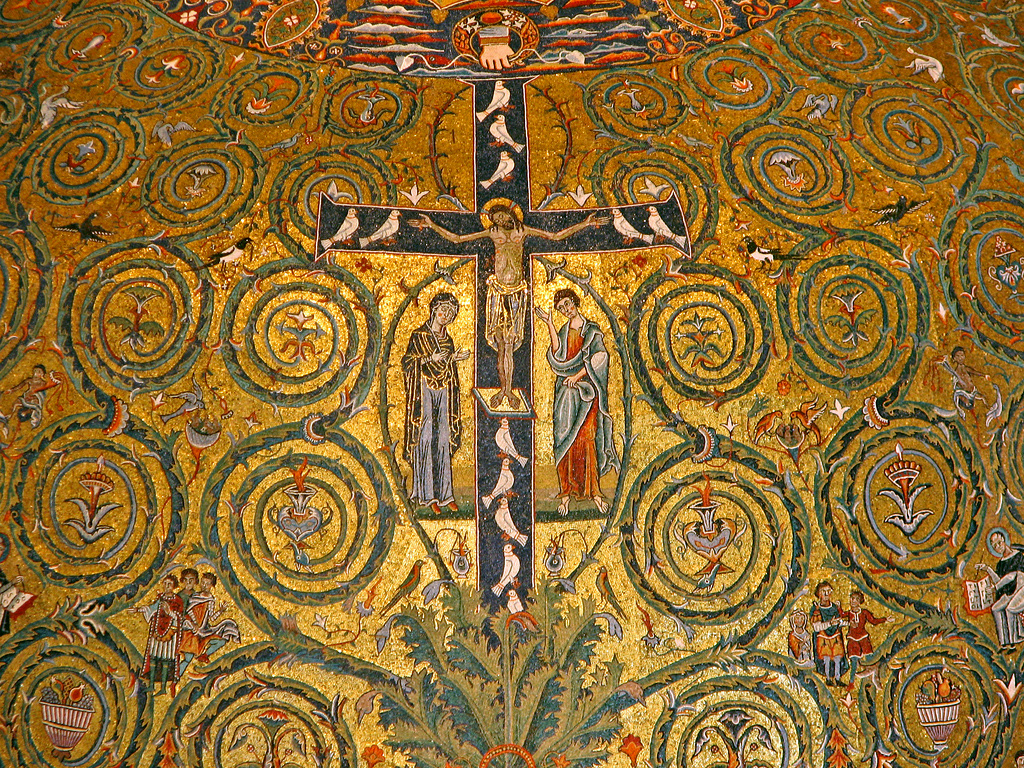
While the profane symbolically recognize the renewal of the earth through this natural ritual of spring, we Gnostics celebrate the union of our spiritual consciousness with our Innermost through Christ our Solar Hero, or fire of Kundalini. With our transmuted sexual force we descend into the dark depths of our own underworld, our subconsciousness, infraconsciousness and unconsciousness, and by experiencing Easter within our physical, psychological and spiritual nature we return into the light realms of the Solar Logos or Cosmic Christ, but now possessing an awakened and Christified consciousness. This is how we transfer our spiritual identity and unite it to the Christic Cosmic Consciousness.
By means of Initiation we personify the dramatic portrayal of the Easter cycle within ourselves and participate fully in the sacred drama.
The entering of the Initiate into the heavenly Jerusalem on Palm Sunday symbolizes the entry into the different degrees of the initiation through triumphant psychological death. So, the ordeals of initiation remind us that the praises of the world are really worthless. The world cries "Hosanna" one day and "Crucify him" the next. This example must illustrate that our highest achievements are not in the world of matter, or society, but within the internal worlds, where our sovereignty may grow into its full stature through initiation, where our Innermost, through Christ, will govern all of nature.
But all of this process must begin as all things begin: from the root force of all creation.
Easter, again named after the Goddess of Spring, is the only one of the Christian festivals which is decided by the phases of the moon, which is why it moves in transit. Easter Sunday is the first Sunday after the full moon on or after the vernal equinox, which is when the Sun enters Aries. It is at the same time as the Jewish Feast of Pesach, or 'Passing Over', when a lamb is slaughtered and eaten in haste, with bitter herbs and cups of red wine. Many European countries derive their name from this festival from 'Pasques' in French, 'Pask' in Dutch or 'Pasche' in Latin, most of these being taken to mean 'Passion', and relate to the Crucifixion. Once again, the symbols linked with the Easter Festival contain many pre-Christian ones. The decorated eggs stand for the rebirth of nature; the chocolate rabbit is the Goddess's scared hare in disguise. The Easter bonnets represent the new set of clothes worn for the first time as spring unfolds her golden daffodils, and the tufts of pussy willow fur the branches in the hedges.
http://www.crystalspirits.biz/CrystalSpiritsInfosite/wicca/ostra.htm
Jacob Grimm, *Ostara, and Easter customs
In his 1835 Deutsche Mythologie, Jacob Grimm cites comparative evidence to reconstruct a potential continental Germanic goddess whose name would have been preserved in the Old High German name of Easter, *Ostara. Addressing skepticism towards goddesses mentioned by Bede, Grimm comments that "there is nothing improbable in them, nay the first of them is justified by clear traces in the vocabularies of Germanic tribes."[5] Specifically regarding Ēostre, Grimm continues that:
- We Germans to this day call April ostermonat, and ôstarmânoth is found as early as Eginhart (temp. Car. Mag.). The great Christian festival, which usually falls in April or the end of March, bears in the oldest of OHG remains the name ôstarâ ... it is mostly found in the plural, because two days ... were kept at Easter. This Ostarâ, like the [Anglo-Saxon] Eástre, must in heathen religion have denoted a higher being, whose worship was so firmly rooted, that the Christian teachers tolerated the name, and applied it to one of their own grandest anniversaries.[6]
Grimm notes that "all of the nations bordering on us have retained the Biblical pascha; even Ulphilas writes paska, not áustrô, though he must have known the word". Grimm details that the Old High German adverb ôstar "expresses movement towards the rising sun", as did the Old Norse term austr, and potentially also Anglo-Saxon ēastor and Gothic áustr. Grimm compares these terms to the identical Latin term auster. Grimm says that the cult of the goddess may have worshiped an Old Norse form, Austra, or that her cult may have already been extinct by the time of Christianization.[7]
Grimm notes that the Old Norse Prose Edda book Gylfaginning attests to a male being called Austri, who Grimm describes as a "spirit of light." Grimm comments that a female version would have been *Austra, yet that the High German and Saxon peoples seem to have only formed Ostarâ and Eástre, feminine, and not Ostaro and Eástra, masculine. Grimm additionally speculates on the nature of the goddess and surviving folk customs that may have been associated with her in Germany:
- Ostara, Eástre seems therefore to have been the divinity of the radiant dawn, of upspringing light, a spectacle that brings joy and blessing, whose meaning could be easily adapted by the resurrection-day of the Christian's God. Bonfires were lighted at Easter and according to popular belief of long standing, the moment the sun rises on Easter Sunday morning, he gives three joyful leaps, he dances for joy ... Water drawn on the Easter morning is, like that at Christmas, holy and healing ... here also heathen notions seems to have grafted themselves on great Christian festivals. Maidens clothed in white, who at Easter, at the season of returning spring, show themselves in clefts of the rock and on mountains, are suggestive of the ancient goddess.[8]
In the second volume of Deutsche Mythologie, Grimm picks up the subject of Ostara again, connecting the goddess to various German Easter festivities, including Easter eggs:
- But if we admit, goddesses, then, in addition to Nerthus, Ostara has the strongest claim to consideration. To what we said on p. 290 I can add some significant facts. The heathen Easter had much in common with May-feast and the reception of spring, particularly in matter of bonfires. Then, through long ages there seem to have lingered among the people Easter-games so-called, which the church itself had to tolerate : I allude especially to the custom of Easter eggs, and to the Easter tale which preachers told from the pulpit for the people's amusement, connecting it with Christian reminiscences.[9]
Grimm comments on further Easter time customs, including unique sword dances and particular baked goods ("pastry of heathenish form"). In addition, Grimm weights a potential connection to the Slavic spring goddess Vesna and the Lithuanian Vasara.[9]
In Northern Europe, Easter imagery often involves hares and rabbits. Citing folk Easter customs in Leicestershire, England where "the profits of the land called Harecrop Leys were applied to providing a meal which was thrown on the ground at the 'Hare-pie Bank'", late 19th-century scholar Charles Isaac Elton theorizes a connection between these customs and the worship of Ēostre.[18] In his late 19th-century study of the hare in folk custom and mythology, Charles J. Billson cites numerous incidents of folk custom involving the hare around the period of Easter in Northern Europe. Billson says that "whether there was a goddess named Eostre, or not, and whatever connection the hare may have had with the ritual of Saxon or British worship, there are good grounds for believing that the sacredness of this animal reaches back into an age still more remote, where it is probably a very important part of the great Spring Festival of the prehistoric inhabitants of this island."[14]
Some scholars have linked customs and imagery involving hares to Ēostre and the Norse goddess Freyja. Writing in 1972, John Andrew Boyle cites commentary contained within an etymology dictionary by A. Ernout and A. Meillet, where the authors write that "Little else [...] is known about [Ēostre], but it has been suggested that her lights, as goddess of the dawn, were carried by hares. And she certainly represented spring fecundity, and love and carnal pleasure that leads to fecundity." Boyle responds that nothing is known about Ēostre outside of Bede's single passage, that the authors had seemingly accepted the identification of Ēostre with the Norse goddess Freyja, yet that the hare is not associated with Freyja either. Boyle writes that "her carriage, we are told by Snorri, was drawn by a pair of cats — animals, it is true, which like hares were the familiars of witches, with whom Freyja seems to have much in common." However, Boyle adds that "on the other hand, when the authors speak of the hare as the 'companion of Aphrodite and of satyrs and cupids' and point out that 'in the Middle Ages it appears beside the figure of Luxuria', they are on much surer ground and can adduce the evidence of their illustrations."[19]
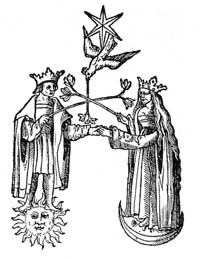
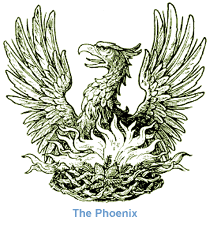

Comments
A brilliant topic Kelly...thanks for posting this and a very happy Ostara......Drekx x